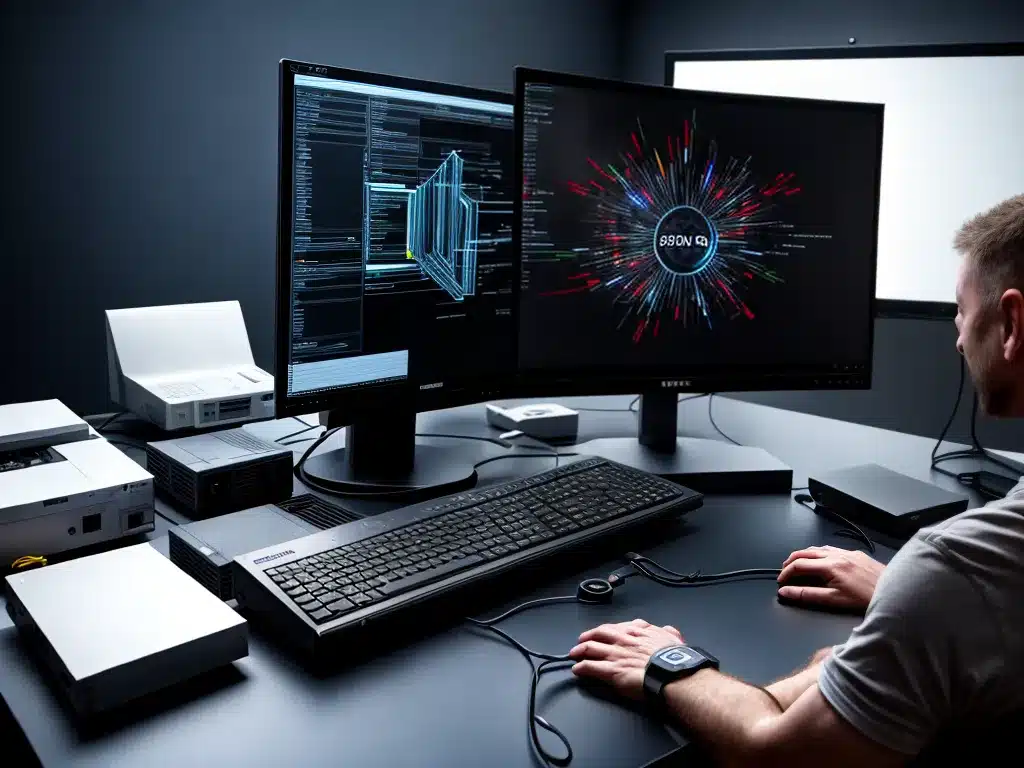
Introduction
Having problems with your graphics drivers causing crashes, glitches, or poor performance in games? A clean reinstall is often the best solution for fixing driver issues and getting your graphics card performing optimally again.
Reinstalling your drivers ensures you have the latest stable drivers from the manufacturer and clears out any corrupted, broken, or incompatible files that may be causing problems. It essentially resets your graphics card and software back to factory settings.
A clean install is more involved than just uninstalling and reinstalling the drivers normally. It completely removes all traces of the previous drivers to ensure none of those older files interfere with the new drivers being installed.
In this comprehensive guide, I’ll walk you through the entire process of cleanly reinstalling your NVIDIA or AMD graphics drivers from start to finish.
Preparation
Before beginning the clean install process, there are a few preparatory steps you should take:
Download the Latest Drivers
-
First, go to the NVIDIA or AMD website and download the latest official drivers for your specific graphics card model. Make sure you get the proper drivers for your card and operating system.
-
For NVIDIA cards, get drivers from www.nvidia.com/drivers.
-
For AMD cards, get drivers from www.amd.com/support.
Close All Programs
- Close out of all open programs and applications. You want to make sure no programs are running or trying to access the graphics drivers during the reinstallation.
Boot into Safe Mode
-
Restart your computer and boot into “Safe Mode” before reinstalling the drivers. Safe Mode loads only the essential Windows files and drivers needed to run your system. This prevents any potential conflicts during the driver installation.
-
To get into Safe Mode, hold down the Shift key while clicking the Restart option in Windows. Then select Troubleshoot > Advanced Options > Startup Settings > Restart. After restarting, select Safe Mode.
Using Display Driver Uninstaller
To completely clean out your previous graphics drivers before installing the new ones, I highly recommend using a dedicated driver removal utility like Display Driver Uninstaller (DDU).
DDU completely wipes away all traces of the old drivers, including any registry keys, files, folders, and settings associated with them. This gives you a fresh start for the new driver installation.
Here are the steps to use DDU to cleanly uninstall your existing graphics drivers:
Download and Launch DDU
-
Download Display Driver Uninstaller from www.guru3d.com.
-
Extract and run the DDU executable file. Click “Yes” on the User Account Control prompt to allow it to make changes to your system.
Select Your GPU
- In DDU, select the type of GPU you have from the drop-down menu at the top. Choose either “NVIDIA” or “AMD”.
Clean and Restart
-
Check the box for “Prevent downloads of drivers from ‘Windows Update’”.
-
Click Clean and Restart. This will completely uninstall the current graphics drivers, cleaning the registry and file system of associated driver files and keys.
-
Your system will automatically restart into Safe Mode after the cleanup completes.
Installing the New Graphics Drivers
With your system now “clean” of the old graphics drivers, you’re ready to install the latest ones you downloaded:
Run the Driver Installer
-
In Safe Mode, run the NVIDIA or AMD driver installer you downloaded earlier.
-
When prompted, select a “Clean Install” or “Custom Install” option for the most thorough clean driver installation.
Follow the Steps in the Installer
- Carefully read and follow the steps in the driver installer. Reboot if prompted to complete the installation.
Restart Normally
-
Once the new drivers are installed, restart your computer normally to load into normal Windows mode.
-
Your PC will now be running the new driver version instead of the old one.
Verifying the Driver Installation
To check that your graphics driver reinstallation succeeded:
Confirm the New Driver Version
-
Go to Device Manager > Display Adapters and double-click your GPU.
-
In the adapter Properties > Driver tab, the Driver Version should now reflect the new driver you just installed.
Check for Stability
-
Run some graphics-intensive games or benchmarks to verify your GPU is running stably without any crashes or artifacts.
-
Use a tool like FurMark to heavily stress test your graphics card and check for overheating issues.
-
If you experience any ongoing stability problems, you may need to try older or newer drivers to find the optimal version for your system.
Troubleshooting Issues
If the clean driver reinstallation fails to fix your problems, here are some troubleshooting steps to try:
-
Use DDU again – Sometimes driver files can stubbornly remain. Run DDU in Safe Mode again to eliminate any possible remnants.
-
Try older/newer drivers – Download and install older or newer drivers if the latest have issues. An older version might be more stable for your hardware.
-
Update BIOS/chipset drivers – Make sure your motherboard BIOS, chipset, and other system drivers are fully up-to-date.
-
Check GPU seating/cables – Reseat your graphics card in the PCIe slot and check that power cables are properly connected.
-
Test other GPU – Try installing your GPU in another PC or using a different GPU in your PC. This can determine if the issue is hardware or software related.
-
Clean install Windows – If you continue having problems, a full clean reinstall of Windows may be necessary to eliminate driver conflicts.
Conclusion
Following this complete clean driver reinstallation guide should get your graphics card back running smoothly with the latest official drivers from NVIDIA or AMD.
Taking the time to fully wipe away the old drivers and freshly installing the new ones helps resolve many common GPU issues. Combined with some further troubleshooting, reinstalling drivers using this method ultimately gets graphics performance and stability back on track.












